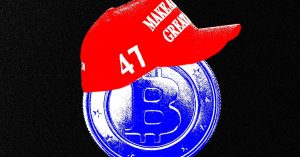As the largest publicly traded Business Development Company (BIZD), Ares Capital’s (NASDAQ:ARCC) quarterly results often serve as a bellwether for the sector. Moreover, given its long and illustrious history of navigating numerous economic cycles and downturns and its leadership team coming from leading global alternative asset manager Ares Management Corporation (ARES), ARCC management’s commentary on the outlook for the sector is often particularly insightful. This article examines Ares Capital’s Q1 results and the implications of management’s commentary for the broader BDC sector. We will also share our latest views on the stock, its current valuation, and fundamental performance.
ARCC Stock’s Q1 Highlights
On the surface, Ares Capital’s Q1 results appear to be quite solid. Although loan accruals increased slightly and core earnings per share and net investment income per share declined sequentially, they remained elevated on a year-over-year basis, and asset values continued to increase. Moreover, non-accruals remain well below historical averages, and the decline in core earnings per share and net investment income per share was largely driven by a slight decline in weighted average yield (due to a decline in second-lien loans and an increase in first-lien loans) and an increase in the share count. Additionally, the dividend is supported more than two-fold by spillover income.
Dealmaking activity is also picking up, and the company’s exposure to first-lien loans continues to increase, making the portfolio increasingly conservatively positioned. Finally, management sounded optimistic about the company’s prospects moving forward, stating on the earnings call:
we are confident that the factors that have driven our historical outperformance remain firmly in place and as a result, we remain optimistic about our future prospects.
ARCC Stock’s Q1 Implications For The BDC Sector
However, there were some underlying issues explicitly and implicitly mentioned by management. In this section, we’ll discuss these issues and their implications for the broader BDC industry. Ares Capital’s declining net investment income and earnings per share were the result of a continued decline in second-lien loan investments, offset by increases in both equity and first-lien loan investments, leading to a lower weighted average yield on their investments.
Management suggested during the conference call this reflects a broader sector trend, with diminishing second-lien loan opportunities and better prospects in the first-lien loan market:
And that second lien, which has been a larger part of our investing effort, is just frankly not as prevalent in the market in terms of the mix of new deals…the return opportunities in the first lien market are super attractive. So, regardless of the fact that there aren’t as many second lien opportunities right now, we’re not too bothered by that given the other opportunities that the market is showing us. But certainly, it is more a function of what the market is giving rather than a purposeful change on our part.
What this means is that businesses that put a heavy emphasis on 1st lien loans like Blackstone Secured Lending (BXSL), Blue Owl BDC (OBDC), Sixth Street Specialty Lending (TSLX), Goldman Sachs BDC, Inc (GSBD), and Hercules Capital, Inc. (HTGC) should continue to enjoy significant opportunities to deploy capital, whereas BDCs like Golub Capital BDC, Inc. (GBDC) that invest primarily in second lien-like loans may have to adjust their capital allocation strategy a bit moving forward.
Management also acknowledged the challenges posed by operating in a more competitive environment. As discussed in our past article, the competitive environment is becoming increasingly tough as more investors enter the space, with Blackstone (BX), BlackRock (BLK), Brookfield (BAM, BN), ARES, KKR (KKR), Carlyle (CG), Apollo (APO), Blue Owl (OWL), JPMorgan (JPM), and Goldman Sachs (GS) pouring hundreds of billions of dollars in aggregate into these loans. This is shifting the supply demand balance in favor of borrowers rather than lenders, leading to less attractive terms for lenders like ARCC.
Additionally, with interest rates and inflation remaining elevated, stress continues to build in the lower end of Ares Capital’s investment portfolio, as evidenced by the uptick in non-accruals and increased revolving credit facility draw-downs among these companies. Despite these signs of growing stress and persistent inflation, Ares Capital’s continued strong performance with relatively low non-accruals attests to their strong underwriting skills at this point in the cycle. Moving forward, the market is likely going to see an increasing separation of stronger underwriters from weaker underwriters in the BDC sector.
Another key takeaway is that despite its robust underwriting so far, Ares Capital’s management remains cautious about the sustainability of its earnings power. As highlighted on the earnings call, the future outlook for interest rates is uncertain, and therefore management is hesitant not only to raise its base dividend but even to pay out special dividends, despite facing an excise tax on its spillover income. This frank admission speaks volumes about the direction of earnings and the potentially shaky ground upon which thinly covered dividends stand in the BDC sector. As management pointed out on the earnings call:
we’re in a little bit of a tricky position as you can probably appreciate, because while we have loads of earnings in excess of the regular dividend, the trajectory for rates going forward is reasonably uncertain. I think if you ask around the table, folks would have very different views. So, combining that with the fact that we really aren’t in a position, in my opinion, any way where we want to put the company in a place where we would have to reduce its regular dividend, we just feel better materially out earning it today and building the NAV. So, hopefully, that answers the question, but it’s a little bit tricky in a world where the rate environment changed quickly.
Another challenge facing BDCs is the increasing cost of borrowing as fixed-rate loans and other debt forms mature, requiring refinancing at significantly higher rates. Ares Capital, for example, recently refinanced debt maturing in June at 4.2%, with new debt at 5.95%. Although a decent rate in the current environment, this 175 basis point headwind signifies the challenges they face, which will place a meaningful headwind on BDCs’ earnings power. Additionally, they are turning to increasingly creative financing options to manage costs, including issuing their first CLO in quite some time.
Investor Takeaway
Everything still looks good on the surface for ARCC, and its forward dividend yield of 9.2% is quite attractive. Moreover, its 7% premium to NAV is high compared to ARCC’s history, but it is not prohibitively high and is still well below the premiums currently had by some of its peers like Capital Southwest (CSWC) at 58.2% and Main Street Capital (MAIN) at 74.25%. Additionally, the premium enables it to issue equity capital accretively, to fuel further growth.
That being said, stress continues to build under the surface with revolvers being increasingly drawn down in some of ARCC’s counterparties and non-accruals are beginning to tick up. Management is also hesitant to pay out special dividends despite having a huge stockpile of spillover income, due to its uncertainty about the earnings headwinds that could come from interest rates falling. Finally, with competition in the space heating up and BDCs having to increasingly refinance maturing fixed-rate debt at higher rates, the risk-reward and earnings power of BDCs are likely declining.
When combining the very rich valuations across the sector and the growing risks and high levels of competition for deals, BDCs are looking increasingly unattractive. ARCC is a Hold given its quality underwriting performance, attractive and well-covered dividend, and not outlandish premium to NAV. However, the growing headwinds and the relatively high premium to NAV keep me from viewing Ares Capital as a Buy.
Read the full article here









